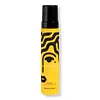What's inside
What's inside
 Benefits
Benefits

 Concerns
Concerns

 Ingredients Side-by-side
Ingredients Side-by-side

Water
Skin ConditioningCetearyl Alcohol
EmollientGlycol Stearate
EmollientCetyl Alcohol
EmollientParfum
MaskingDimethicone
EmollientBehentrimonium Methosulfate
Ceteareth-20
CleansingArgania Spinosa Kernel Oil
EmollientHydrolyzed Vegetable Protein Pg-Propyl Silanetriol
Skin ConditioningPPG-1 Trideceth-6
Skin ConditioningPolyquaternium-11
Polyquaternium-37
Polyquaternium-72
Propylene Glycol Dicaprylate/Dicaprate
EmollientButylene Glycol
HumectantCaprylyl Glycol
EmollientC10-40 Isoalkylamidopropylethyldimonium Ethosulfate
Disodium EDTA
Sodium Chloride
MaskingPotassium Sorbate
PreservativeChlorphenesin
AntimicrobialPhenoxyethanol
PreservativeEugenol
PerfumingAlpha-Isomethyl Ionone
PerfumingButylphenyl Methylpropional
PerfumingLinalool
PerfumingHydroxyisohexyl 3-Cyclohexene Carboxaldehyde
MaskingWater, Cetearyl Alcohol, Glycol Stearate, Cetyl Alcohol, Parfum, Dimethicone, Behentrimonium Methosulfate, Ceteareth-20, Argania Spinosa Kernel Oil, Hydrolyzed Vegetable Protein Pg-Propyl Silanetriol, PPG-1 Trideceth-6, Polyquaternium-11, Polyquaternium-37, Polyquaternium-72, Propylene Glycol Dicaprylate/Dicaprate, Butylene Glycol, Caprylyl Glycol, C10-40 Isoalkylamidopropylethyldimonium Ethosulfate, Disodium EDTA, Sodium Chloride, Potassium Sorbate, Chlorphenesin, Phenoxyethanol, Eugenol, Alpha-Isomethyl Ionone, Butylphenyl Methylpropional, Linalool, Hydroxyisohexyl 3-Cyclohexene Carboxaldehyde
Water
Skin ConditioningPolyquaternium-11
Pvp
Emulsion StabilisingCocamidopropyl Betaine
CleansingAlthaea Officinalis Root Extract
Skin ConditioningGlycerin
HumectantRicinus Communis Seed Oil
MaskingArgania Spinosa Kernel Oil
EmollientCaprylic/Capric Triglyceride
MaskingBiotin
AntiseborrhoeicPolyglyceryl-4 Caprate
EmulsifyingPolyglyceryl-6 Caprylate
EmulsifyingSodium Chloride
MaskingC12-18 Acid Triglyceride
EmollientCocamidopropyl Dimethylamine
EmulsifyingSodium Glycolate
BufferingSodium Benzoate
MaskingBenzyl Alcohol
PerfumingEthylhexylglycerin
Skin ConditioningParfum
MaskingBenzyl Benzoate
AntimicrobialHexyl Cinnamal
PerfumingAmyl Cinnamal
PerfumingHydroxycitronellal
PerfumingLinalool
PerfumingCitronellol
PerfumingLimonene
PerfumingCoumarin
PerfumingGeraniol
PerfumingWater, Polyquaternium-11, Pvp, Cocamidopropyl Betaine, Althaea Officinalis Root Extract, Glycerin, Ricinus Communis Seed Oil, Argania Spinosa Kernel Oil, Caprylic/Capric Triglyceride, Biotin, Polyglyceryl-4 Caprate, Polyglyceryl-6 Caprylate, Sodium Chloride, C12-18 Acid Triglyceride, Cocamidopropyl Dimethylamine, Sodium Glycolate, Sodium Benzoate, Benzyl Alcohol, Ethylhexylglycerin, Parfum, Benzyl Benzoate, Hexyl Cinnamal, Amyl Cinnamal, Hydroxycitronellal, Linalool, Citronellol, Limonene, Coumarin, Geraniol
Ingredients Explained
These ingredients are found in both products.
Ingredients higher up in an ingredient list are typically present in a larger amount.
You may know this ingredient as argan oil. Argan Oil has antioxidant, hydrating, and soothing properties.
Studies have shown argan oil can help fight again radical damage from the sun. This makes it effective at preventing hyperpigmentation.
Large amounts of vitamin E found in argan oil helps the skin retain water. Argan oil also contains fatty acids such as linoleic acid, oleic acid, and palmitic acid. It is also a good source of lipids.
Another benefit of argan oil is skin-soothing. It can help reduce inflammation-related skin symptoms.
Argan Oil is effective at regulating sebum production in pores. This can make it effective at treating hormonal acne.
Traditionally, argan oil was used for its antibacterial and antifungal properties. However, argan oil contains fatty acids that may make it not fungal-acne safe.
Argan Trees are native to Morocco.
Learn more about Argania Spinosa Kernel OilLinalool is a fragrance and helps add scent to products. It's derived from common plants such as cinnamon, mint, citrus, and lavender.
Like Limonene, this ingredient oxidizes when exposed to air. Oxidized linalool can cause allergies and skin sensitivity.
This ingredient has a scent that is floral, spicy tropical, and citrus-like.
Learn more about LinaloolParfum is a catch-all term for an ingredient or more that is used to give a scent to products.
Also called "fragrance", this ingredient can be a blend of hundreds of chemicals or plant oils. This means every product with "fragrance" or "parfum" in the ingredients list is a different mixture.
For instance, Habanolide is a proprietary trade name for a specific aroma chemical. When used as a fragrance ingredient in cosmetics, most aroma chemicals fall under the broad labeling category of “FRAGRANCE” or “PARFUM” according to EU and US regulations.
The term 'parfum' or 'fragrance' is not regulated in many countries. In many cases, it is up to the brand to define this term.
For instance, many brands choose to label themselves as "fragrance-free" because they are not using synthetic fragrances. However, their products may still contain ingredients such as essential oils that are considered a fragrance by INCI standards.
One example is Calendula flower extract. Calendula is an essential oil that still imparts a scent or 'fragrance'.
Depending on the blend, the ingredients in the mixture can cause allergies and sensitivities on the skin. Some ingredients that are known EU allergens include linalool and citronellol.
Parfum can also be used to mask or cover an unpleasant scent.
The bottom line is: not all fragrances/parfum/ingredients are created equally. If you are worried about fragrances, we recommend taking a closer look at an ingredient. And of course, we always recommend speaking with a professional.
Learn more about ParfumWe don't have a description for Polyquaternium-11 yet.
Chances are, you eat sodium chloride every day. Sodium Chloride is also known as table salt.
This ingredient has many purposes in skincare: thickener, emulsifier, and exfoliator.
You'll most likely find this ingredient in cleansers where it is used to create a gel-like texture. As an emulsifier, it also prevents ingredients from separating.
There is much debate on whether this ingredient is comedogenic. The short answer - comedogenic ratings don't tell the whole story. Learn more about comegodenic ratings here.
The concensus about this ingredient causing acne seems to be divided. Research is needed to understand if this ingredient does cause acne.
Scrubs may use salt as the primary exfoliating ingredient.
Learn more about Sodium ChlorideWater. It's the most common cosmetic ingredient of all. You'll usually see it at the top of ingredient lists, meaning that it makes up the largest part of the product.
So why is it so popular? Water most often acts as a solvent - this means that it helps dissolve other ingredients into the formulation.
You'll also recognize water as that liquid we all need to stay alive. If you see this, drink a glass of water. Stay hydrated!
Learn more about Water